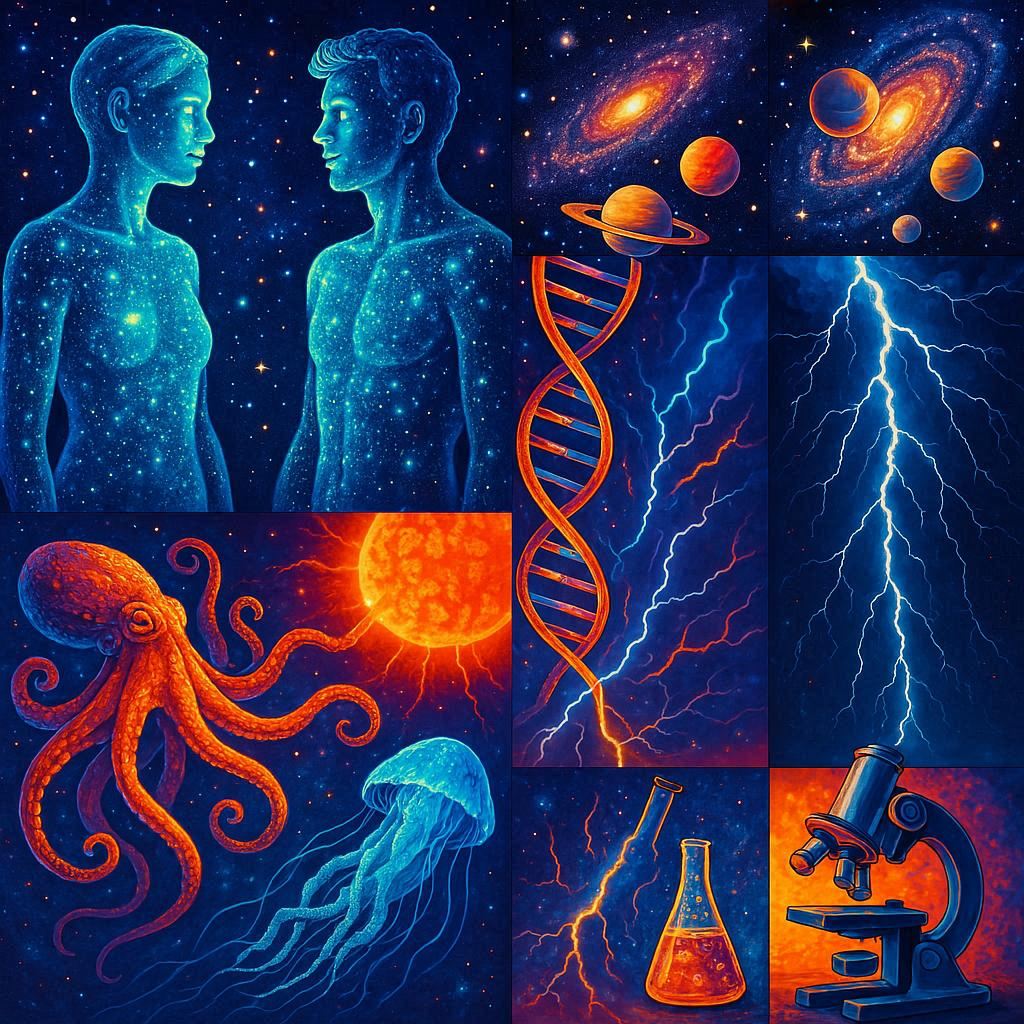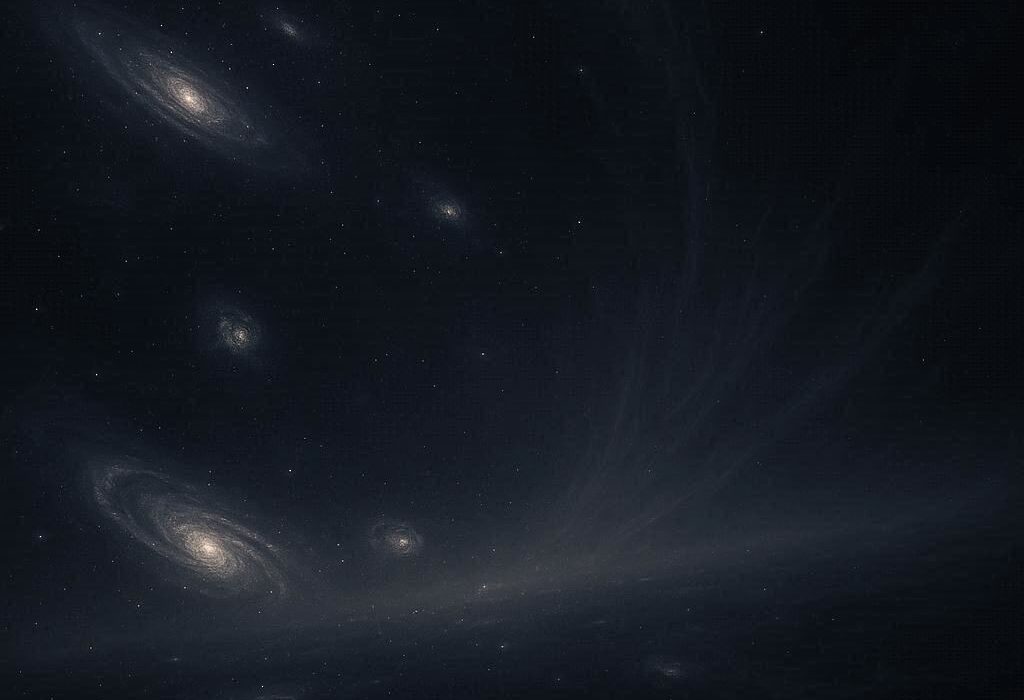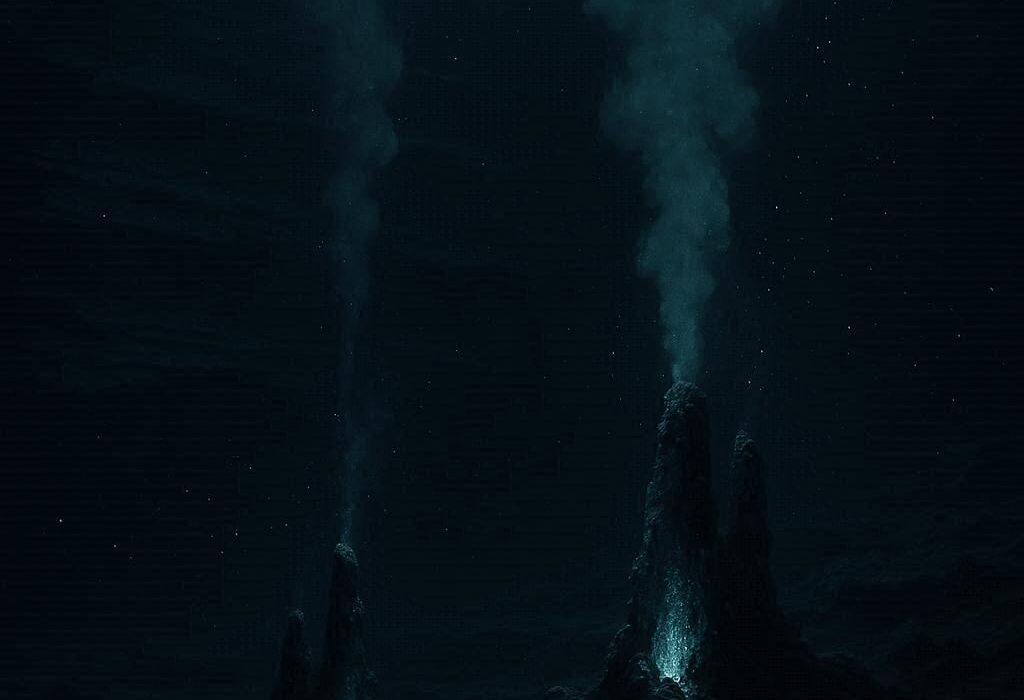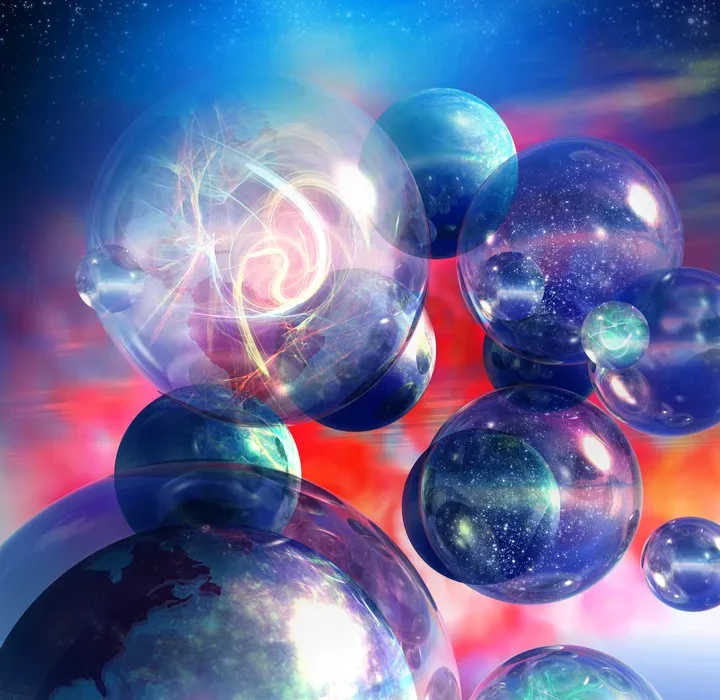Science is a world full of wonder, mystery, and astonishing discoveries. It constantly challenges our understanding of reality and makes the impossible seem plausible. From the tiniest particles to the vastness of the universe, science is a journey of curiosity, imagination, and relentless exploration. Here are 50 mind-blowing scientific facts that will make you marvel at the universe, humanity, and the hidden forces that shape our existence.
1. Water Can Boil and Freeze at the Same Time
Under specific conditions, water can reach a point called the “triple point” where it simultaneously exists as solid, liquid, and gas. This phenomenon occurs under carefully controlled pressure and temperature, revealing the delicate balance of matter in our universe.
2. Space Smells Like Seared Steak
Astronauts returning from spacewalks have reported a distinct smell on their suits and equipment. Scientists believe this scent comes from high-energy particles interacting with the metal in their suits, creating a burnt, metallic aroma reminiscent of steak or welding fumes.
3. Your Stomach Gets a New Lining Every Few Days
The human stomach produces a new lining approximately every three to four days to protect itself from its own potent digestive acids. Without this constant renewal, the stomach would digest itself.
4. Bananas Are Naturally Radioactive
Bananas contain potassium, and a small fraction of that potassium is radioactive. While the radiation level is harmless, eating enough bananas could theoretically expose you to measurable radioactivity.
5. There’s a Planet Made of Diamonds
Scientists have discovered exoplanets with carbon compositions high enough that extreme pressure turns carbon into diamond. One such planet, 55 Cancri e, is roughly twice the size of Earth and could be covered in crystallized carbon.
6. Honey Never Spoils
Archaeologists have found pots of honey in ancient Egyptian tombs that are over 3,000 years old and still perfectly edible. Its low water content, acidity, and natural enzymes make it a near-immortal food.
7. A Day on Venus Is Longer Than a Year
Venus rotates on its axis so slowly that one day on Venus—its full rotation—takes longer than it does for the planet to orbit the Sun. One day equals about 243 Earth days, while a year is about 225 Earth days.
8. Your Body Contains Star Dust
Every atom in your body was forged in the heart of a star billions of years ago. Elements like carbon, oxygen, and iron are remnants of ancient stellar explosions, making you literally a child of the cosmos.
9. Octopuses Have Three Hearts
Two hearts pump blood to the gills, and one pumps it to the rest of the body. Interestingly, the heart that pumps to the body stops beating when the octopus swims, which may explain why these creatures prefer crawling to swimming.
10. Sharks Existed Before Trees
Sharks have existed for more than 400 million years, while the first trees appeared around 350 million years ago. These ancient predators have survived mass extinctions and drastic environmental changes.
11. Water Can Freeze Upwards
Under specific conditions, water expands as it freezes, causing ice to float rather than sink. This anomaly protects aquatic life by insulating water beneath the ice, allowing ecosystems to survive even in freezing temperatures.
12. There’s a Lake Beneath Antarctica
Beneath the massive ice sheets of Antarctica lies Lake Vostok, a hidden subglacial lake untouched for millions of years. It may contain unique microbial life, offering a glimpse into survival in extreme conditions.
13. You Glow in the Dark
Humans emit a faint light that is invisible to the naked eye. This bioluminescence comes from biochemical reactions in cells, although it’s a million times weaker than sunlight.
14. Sloths Can Hold Their Breath Longer Than Dolphins
Sloths can slow their heart rate and hold their breath for up to 40 minutes underwater, a skill they use to escape predators or traverse rivers. Dolphins, in contrast, typically hold their breath for about 10 minutes.
15. The Universe Is Expanding Faster Than Light
While nothing can move faster than light in space, the universe itself is expanding, stretching the fabric of space-time. This means distant galaxies can recede from us faster than the speed of light, a phenomenon confirmed by cosmic observations.
16. Your Body Has More Bacteria Than Human Cells
The human body hosts trillions of microorganisms, mostly in the gut. These bacteria outnumber human cells, playing a crucial role in digestion, immunity, and even mood regulation.
17. A Teaspoon of a Neutron Star Weighs a Billion Tons
Neutron stars are incredibly dense remnants of supernova explosions. A mere teaspoon of neutron star material would weigh about 6 billion tons on Earth, demonstrating the extreme forces of cosmic compression.
18. Trees Can Communicate Underground
Through networks of fungi known as mycorrhizae, trees exchange nutrients, chemical signals, and warnings about pests or disease. This underground “wood wide web” reveals a hidden social life among plants.
19. Lightning Is Hotter Than the Sun
A bolt of lightning can reach temperatures of about 30,000 Kelvin (53,500°F), which is roughly five times hotter than the surface of the Sun.
20. Space Is Not Empty
Even a vacuum is filled with energy fluctuations known as quantum foam. Particles constantly pop in and out of existence, hinting at the strange and counterintuitive rules governing the universe.
21. Your DNA Could Stretch to the Sun and Back
If unwound and linked together, the DNA in a single human body would stretch about 100 billion kilometers, enough to reach the Sun and back more than 300 times.
22. Water Can Boil Without Heat
In a vacuum, water can boil at room temperature. The absence of atmospheric pressure allows molecules to escape into vapor, demonstrating the delicate interplay between pressure and temperature.
23. Cats Have a Unique Purring Mechanism
Cats purr through a combination of neural oscillators and vocal cord vibrations. Remarkably, their purrs can promote bone healing and reduce stress in humans and themselves.
24. The Moon Drifts Away
The Moon is slowly moving away from Earth at about 3.8 centimeters per year. Over millions of years, this changes the length of days and even affects tides.
25. Your Brain Generates Enough Electricity to Power a Lightbulb
The human brain produces roughly 20 watts of electrical power, enough to illuminate a small lightbulb. This energy drives thought, memory, and consciousness.
26. The Oldest Living Organism Is Over 400,000 Years Old
Some microorganisms trapped in salt crystals have been revived after 400,000 years, proving the extraordinary resilience of life.
27. Venus Rotates Backwards
Unlike most planets, Venus rotates in a retrograde motion. On Venus, the Sun rises in the west and sets in the east, opposite to Earth’s rotation.
28. Water Can Jump
Through a process called Leidenfrost effect, water droplets can hover and move on a superheated surface, almost as if alive, due to a layer of vapor insulating it from the heat.
29. The Largest Living Structure Is in the Ocean
The Great Barrier Reef stretches over 2,300 kilometers and is visible from space. It is the largest living organism on Earth, hosting millions of species.
30. There Are More Stars Than Grains of Sand
Estimates suggest the observable universe contains about 1 septillion stars—far more than all the grains of sand on Earth’s beaches and deserts combined.
31. The Sun’s Core Is Mind-Blowingly Dense
The Sun’s core is about 150 times denser than water and reaches temperatures of 15 million Kelvin. Here, nuclear fusion converts hydrogen into helium, powering the entire solar system.
32. Your Body Has Iron Enough to Make a Nail
The average human body contains about 4 grams of iron, enough to forge a small nail, mainly found in hemoglobin that carries oxygen in the blood.
33. The Universe Has No Center
Cosmologists have discovered that the universe has no central point. Space is expanding uniformly, meaning every point can be considered the “center” depending on perspective.
34. Fire Can Burn Without Oxygen
Certain chemical reactions, like burning magnesium, can produce flames even in low-oxygen environments, revealing the versatility of chemical energy.
35. Some Metals Melt in Your Hand
Gallium is a metal that melts just above room temperature. Hold it in your hand, and it slowly liquefies, defying expectations about solid materials.
36. Dolphins Have Names
Dolphins use unique signature whistles to identify each other, effectively naming themselves in their social groups.
37. Black Holes Aren’t Holes
Black holes are incredibly dense objects with gravitational pull so strong that not even light can escape. They are points of extreme mass concentrated in a tiny space, warping the fabric of space-time.
38. Your Stomach Produces Hydrochloric Acid
The human stomach produces strong hydrochloric acid to digest food. Its concentration is high enough to dissolve metal if exposed directly.
39. The Human Heart Can Create Its Own Electrical Impulses
The heart has its own electrical system, which allows it to beat independently of the brain under certain conditions. This intrinsic rhythm is crucial for survival.
40. Your Bones Are Constantly Renewing
Human bones are dynamic structures, constantly breaking down and rebuilding. The entire skeleton is replaced approximately every ten years.
41. Antarctica Is a Desert
Despite being covered in ice, Antarctica is technically a desert, receiving less than 200 millimeters of precipitation annually.
42. The Brain Uses 20% of Your Body’s Energy
Although it weighs only about 2% of your body mass, the brain consumes roughly 20% of your energy, highlighting its metabolic intensity.
43. Lightning Can Strike the Same Place Twice
Contrary to popular belief, lightning can strike the same location multiple times. Tall structures like the Empire State Building are struck dozens of times each year.
44. Saturn Could Float in Water
Saturn is the least dense planet in our solar system. If there were a bathtub big enough, Saturn would float due to its low density compared to water.
45. The Speed of Light Is Not Absolute in All Mediums
While light in a vacuum travels at 299,792 km/s, it slows down when passing through materials like water or glass due to interactions with atoms.
46. Your Tongue Prints Are Unique
Like fingerprints, every human tongue has a unique pattern of ridges and textures, which could theoretically be used for identification.
47. Water Can Conduct Electricity
Although pure water is a poor conductor, natural water containing dissolved ions allows electric currents to pass through, powering everything from aquatic life to hydroelectric plants.
48. The Human Body Can Survive Without Most of Its Organs
People can survive without a kidney, a lung, or even parts of their liver, thanks to the human body’s remarkable redundancy and regenerative capacity.
49. Jellyfish Can Be Immortal
Some species of jellyfish, like Turritopsis dohrnii, can revert to an earlier stage of life after maturity, effectively bypassing death and making them biologically immortal.
50. Every Second, the Sun Produces More Energy Than Humanity Has Ever Used
The Sun’s nuclear fusion converts millions of tons of matter into energy every second, creating more energy than all human civilization has consumed throughout history.
Science is a testament to the extraordinary complexity and beauty of reality. Every discovery, from the tiniest particle to the farthest galaxy, reveals how astonishing our universe truly is. These 50 facts barely scratch the surface of what science has uncovered, yet they remind us of the boundless curiosity and imagination that drive humanity to explore, understand, and marvel at the cosmos.






